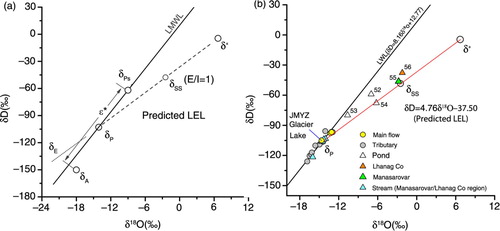Figures & data
Fig. 1 (a) Geographical location of the Yarlungzangbo headwater region; (b) sample location map of various waters from the Yarlungzangbo headwater region and its vicinity, showing the upper Yarlungzangbo flows from the Jiemayangzong Glacier in the western Himalaya to the site near Saga; (c) sample location map of waters in the Yarlungzangbo source area. Some sample numbers are also shown.
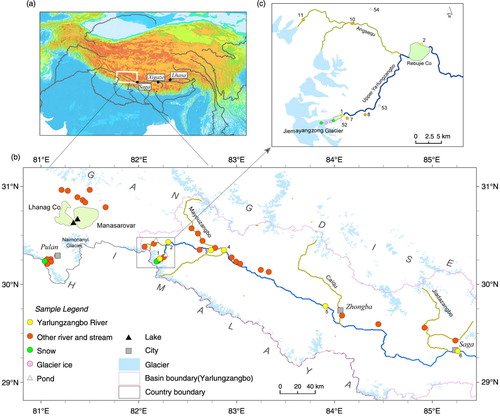
Fig. 2 (a) δ18O and δD results of all waters in relation to the GMWL (δD=δ18O+10) (samples are divided into four categories based upon their geographical locations and the lake/pond sample numbers are shown); (b) δ18O and δD results of various types of water in the Yarlungzangbo headwaters. The local water line (LWL) is developed using isotopic data of snow, ice, river and stream samples.

Table 1. Sample localities and measured isotopic data
Fig. 3 δ18O and δD of surface snow/glacier ice (in the ablation zone of the Jiemayangzong Glacier), glacier lake and stream water samples in the Jiemayangzong Glacier area.
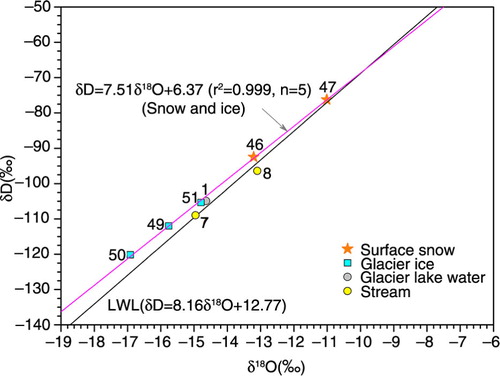
Fig. 4 Main flow (upper Yarlungzangbo) and tributary influx δ18O vs. distance downstream from the JMYZ Glacier (0 km) to Saga (~370 km).
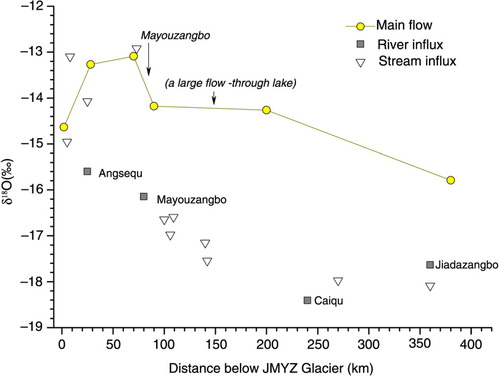
Fig. 5 Plot of river/stream δ18O, d-excess and sampling altitude vs. longitude. These samples do not include main flows in the Yarlungzangbo and waters collected from the western Himalaya. Blue lines represent individual variation trends for each section.
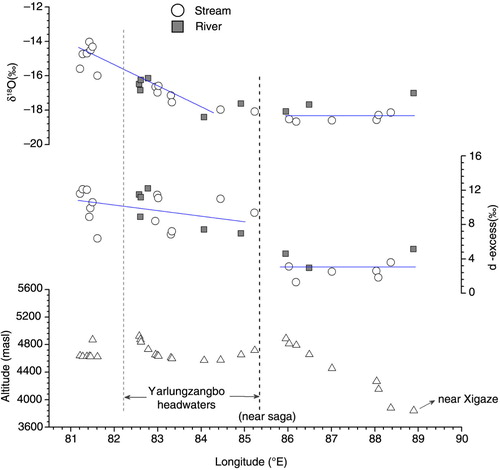
Fig. 6 (a) Schematic representation of the buildup of the predicted LEL relative to LMWL (local meteoric water line) for a given region. δps is the isotopic composition in precipitation in average thaw season. δA is the average isotopic composition in evaporative-flux-weighted atmospheric moisture and is assumed to be in approximate isotopic equilibrium with δps. δss is the isotopic composition in a terminal (closed-drainage) basin fed by annual mean precipitation with an isotopic value of δp in a steady state (evaporation=inflow, E=I). δ* represents the theoretical limiting isotopic composition attainable for water bodies under average evaporative conditions in summer (Appendix A). (b) Isotopic compositions in various waters from the Yarlungzangbo source region (above the confluence with the Mayouzangbo) and the Manasarovar/Lhanag Co region in relation to the LWL and the predicted LEL.
